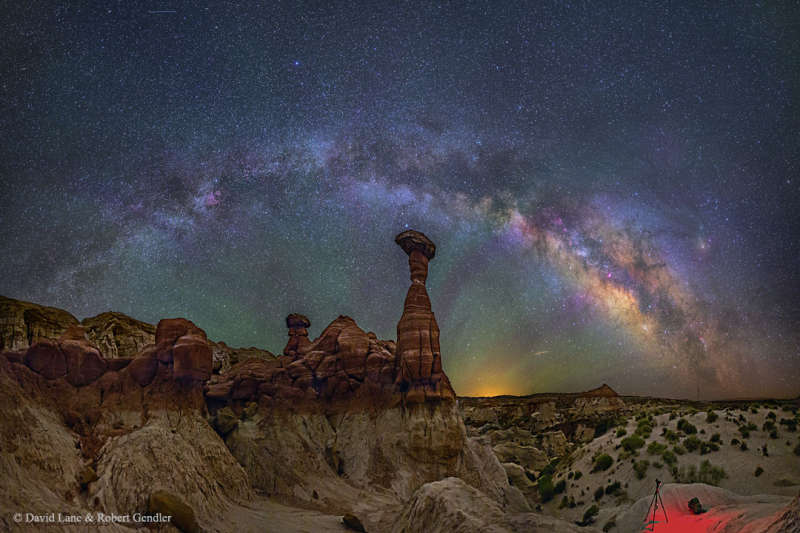Credit & Copyright: David Lane &
R. Gendler (3 insets)
Explanation:
Which is older -- the rocks you see on the ground or the light you see from the sky?
Usually its the rocks that are older, with their origin sentiments deposited well
before light left any of the stars or nebulas you see in the sky.
However, if you can see, through a telescope, a distant galaxy far across the universe
-- further than
Andromeda or spiral galaxy
NGC 7331 (inset) -- then you are seeing light even more
ancient.
Featured here, the central disk of our
Milky Way Galaxy arches over Toadstool
hoodoos rock formations
in northern
Arizona,
USA.
The unusual
Toadstool rock caps
are relatively hard
sandstone
that wind has eroded more slowly than the softer sandstone underneath.
The green bands are
airglow, light emitted by the
stimulated air in
Earth's atmosphere.
On the lower right is a time-lapse camera set up to capture the
sky rotating behind the picturesque foreground scene.
1999 2000 2001 2002 2003 2004 2005 2006 2007 2008 2009 2010 2011 2012 2013 2014 2015 2016 2017 2018 2019 2020 2021 2022 2023 2024 2025 |
Yanvar' Fevral' Mart Aprel' Mai Iyun' Iyul' Avgust Sentyabr' Oktyabr' Noyabr' Dekabr' |
NASA Web Site Statements, Warnings, and Disclaimers
NASA Official: Jay Norris. Specific rights apply.
A service of: LHEA at NASA / GSFC
& Michigan Tech. U.
|
Publikacii s klyuchevymi slovami:
Milky Way - Mlechnyi Put'
Publikacii so slovami: Milky Way - Mlechnyi Put' | |
Sm. takzhe:
Vse publikacii na tu zhe temu >> | |
